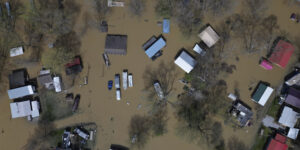The insured property losses resulting from the deadly and damaging wildfire that broke out on Aug. 8 in the town of Lahaina on the Hawaiian island of Maui has been estimated at around $3.2 billion, according to a Karen Clark & Company (KCC) flash estimate.
As of Monday, reports from local authorities indicate the fire has been approximately 85 percent contained.

KCC estimates that 2,200 plus structures were damaged or destroyed due to the destructive and quick moving fire.
Low humidity and drought are partially to blame, as was a prior wet season that caused an increase in vegetation contributing more fuel for the fire to spread.
Hurricane Dora was yet another factor, contributing high winds that stoked the spread of the fire. Wind gusts of up to 67 mph were recorded at the time.
Other fires broke out on the island on the same day, including the Upcountry/Kula fire and Pulehu/Kihei fire, the KCC flash estimate reported.
“These two fires produced minimal insured losses as they occurred in more rural areas. The exact cause of each fire remains under investigation,” KCC stated.
Through independent geospatial analysis of satellite and aerial imagery, KCC estimates that more than 2,200 structures fall within the fire perimeter and over 3,000 total structures were impacted by the fire, including secondary impacts such as branding and smoke.
Most of the damaged structures were residential buildings, with a high number of wood framed, older constructed homes contributing to the damage seen.
RMS estimated approximately 2,100 acres burned as a result of the quick-moving fire.
CoreLogic estimates approximately 3,088 single- and multifamily residential properties with a combined reconstruction value (RCV) of $1.3 billion are within three preliminary wildfire perimeters on Maui.

Most of the impacted residential properties are located within Perimeter 1 where Lahaina is located.
“The source and ignition of the fire are still undetermined, but once the fire moved into the more developed regions of Lahaina, it appears the fire was able to intensify and spread very quickly,” said Dr. Thomas Jeffery, CoreLogic principal wildfire scientist.
“The winds likely pushed embers and flames into the built environment, and then the buildings in Lahaina became the primary source of fuel for the expansion of the fire,” he added.
“Many of the residential properties in Lahaina appear to have wood siding, and a number of them have elevated porches with a lattice underneath. Both are characteristics that make the residence very vulnerable to either ember or direct flame ignition,” he said. “The reported wind speeds and comprehensive urban damage indicate that what likely happened in Lahaina was a true urban conflagration that could have been the result of an initial grass fire.”





















 The Workplace Is Changing; So Are the Risks for Employment Discrimination Claims
The Workplace Is Changing; So Are the Risks for Employment Discrimination Claims  $1 Trillion! 2024 P/C Industry Direct Premiums At Record Level
$1 Trillion! 2024 P/C Industry Direct Premiums At Record Level  Contractors Insurance Alert: Construction Defect Lawsuits Rising
Contractors Insurance Alert: Construction Defect Lawsuits Rising  Allstate: How Can You Save on Auto Insurance?
Allstate: How Can You Save on Auto Insurance? 




